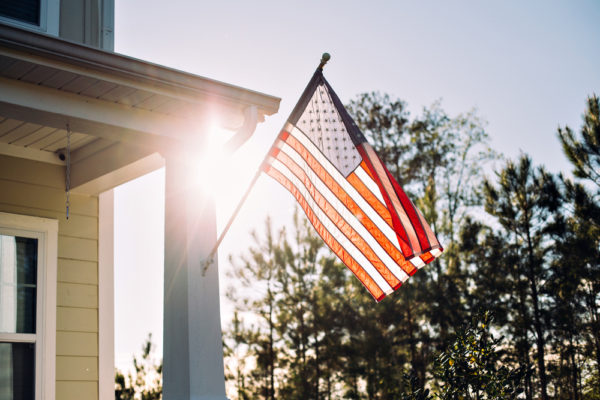America’s Homeowners are Financially Unprepared for an Emergency

One-third (32 percent) of homeowners have less than $1,000 put aside to deal with home repairs and a whopping 18 percent have zero money available to deal with an emergency repair.
According to a recent survey, American homeowners are not prepared to cover the cost of an unexpected home emergency. In addition, many homeowners are confused about what their homeowners insurance does and does not cover, leaving many homeowners struggling to pay for a home repair that is not covered by their insurance policy.
HomeServe USA, which is a leading provider of home repair solutions and also the administrator of the NLC Service Line Warranty Program, recently released the results of the sixth edition of their HomeServe’s Biannual State of the Home Survey and the conclusions were not pretty.
Most of Us Are Unprepared
It turns out that many homeowners are poorly prepared when it comes to handling the cost of an unexpected home repair. One-third (32 percent) of homeowners have less than $1,000 put aside to deal with home repairs and a whopping 18 percent have zero money available to deal with an emergency repair.
The numbers were even bleaker for homeowners that reported a household income under $50,000 with 57 percent saying that they have $500 or less in savings to deal with an unexpected home repair.
In addition to a lack of savings, there seems to be quite a bit of confusion as to who is responsible for common home repairs. Roughly 42 percent of respondents did not realize that they are responsible for the cost to repair a water or sewer line running up to their home, with 13 percent thinking that the city or utility company would cover the cost while 11 percent assumed their homeowners insurance would pay the repair bill.
“It’s easy to assume that the homeowner’s insurance we pay into will be there to help with any emergency repair,” said John Kitzie, CEO of HomeServe USA in a press release. “In fact, that’s not the case in all situations. Unfortunately, standard homeowner insurance policies do not cover repairs to exterior water or sewer lines that connect to the city system. If homeowners don’t take steps to proactively protect themselves, a simple leak can wind up becoming a major financial surprise.”
Homeowners insurance will only cover this type of damage if it is due to a sudden or unexpected event, such as a tornado or other major storm. If the sewer line is damaged due to lack of maintenance or just everyday wear and tear, the homeowner is on the hook for the cost to repair or replace the sewer line, a cost that can be major.
When it comes to homeowners insurance it is possible to purchase a sewer line rider that will help cover some of the costs related to repairing or replacing a damaged sewer line. These riders typically cost around $50 a year but costs can vary.
Emergency Repairs Are Common
While you may think that you will never experience an emergency home repair, you are probably wrong. The systems in a home are complicated and emergency home repairs are more common than you think. The survey found that 51 percent of homeowners had a home repair emergency in the last year.
Here is a breakdown regarding the most common home emergencies according to the survey:
- Heating or AC Repair/Replacement: 17 percent
- Overflowing Toilet: 13 percent
- Water Heater Repair/Replacement: 11 percent
- Electrical: 10 percent
- Leaking Water Pipes: 9 percent
The majority of these repairs can be pricey and costs can quickly spiral out of control. A standard homeowners insurance policy is designed to cover repairs or damage that is caused by sudden and unexpected events. Damage related to routine wear and tear is never covered so in most cases, the homeowner will be on the hook for repairs.
What Can I Do?
There are a couple things you can do to help yourself be more prepared for a home emergency:
Beef Up Your Savings: While this can be difficult for many of us, in the long run it can be a financial lifesaver if you experience a home repair emergency. Look for ways to cut down on expenses and move any additional money into an interest bearing savings account.
Set a savings goal and write out a financial plan on how you will get to your savings goal. Set up an automatic contribution to your savings account, this will ensure that your savings account grows and you are not tempted to spend money earmarked for savings.
Consider refinancing your car or home if rates have dropped. Stick the additional savings into your home emergency account.
Consider a Home Warranty: Home warranties will help cover the cost of some home repairs and will often step up to cover unexpected home repair bills. However, there can be exclusions with home warranties so make sure you read the agreement in full and ask questions about anything you don’t understand.
Home warranties vary so shop around and look for the best coverage at the best price. You may be required to perform specific maintenance on your home in order for the warranty to stay in effect, be sure to understand your obligations.
Understand Your Insurance
Read your policy and make sure you understand your coverages and what you should do if you need to make a claim. Shop your insurance policy on a regular basis, insurers rate risk differently so premium quotes can vary dramatically. Add any savings on your insurance to your home emergency fund. Shop online now to get the best home insurance rates and coverage options.
Remember; when you make a claim your insurance premium will most likely go up. Pay small repair bills out of pocket and save your insurance for major incidents.
